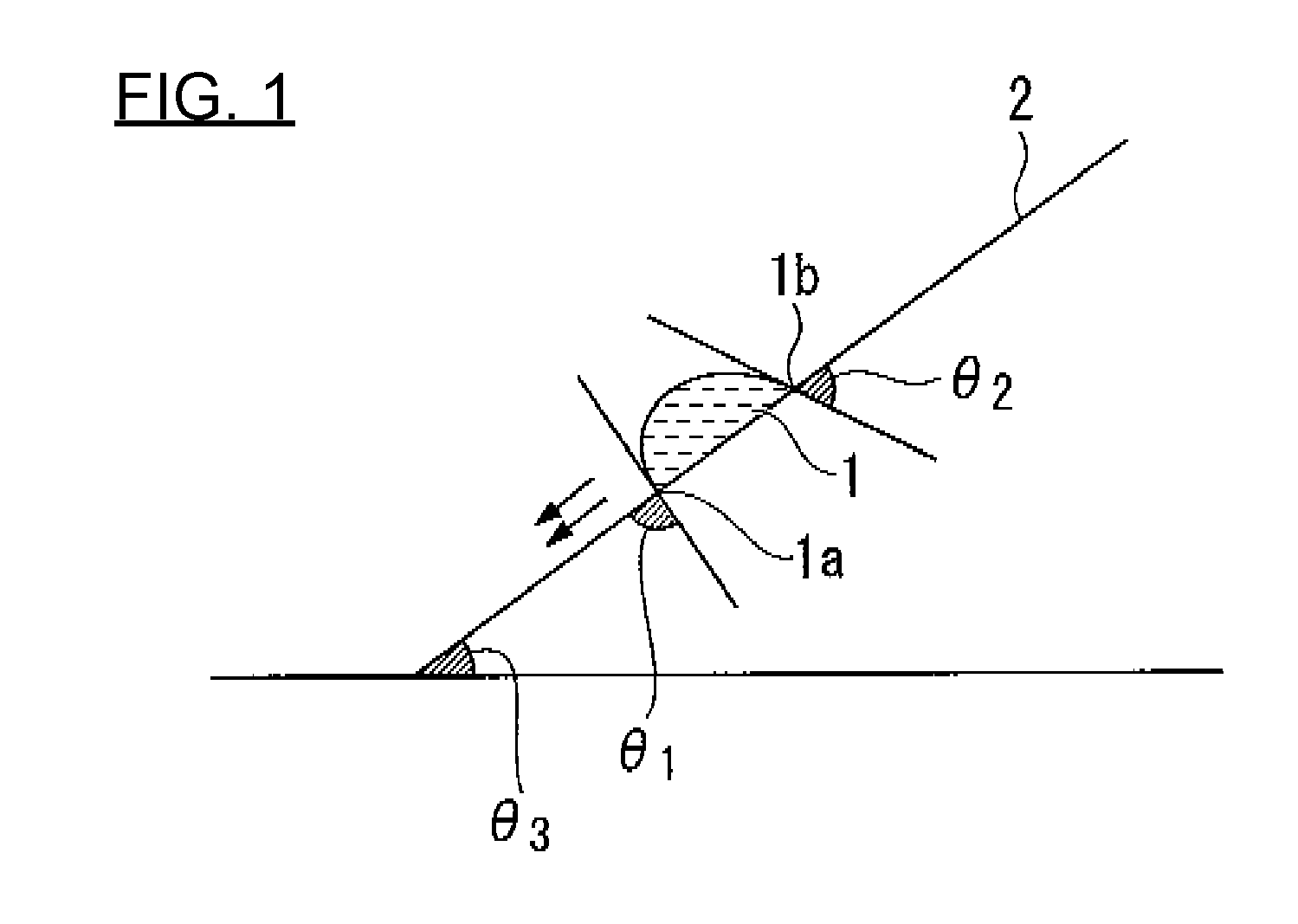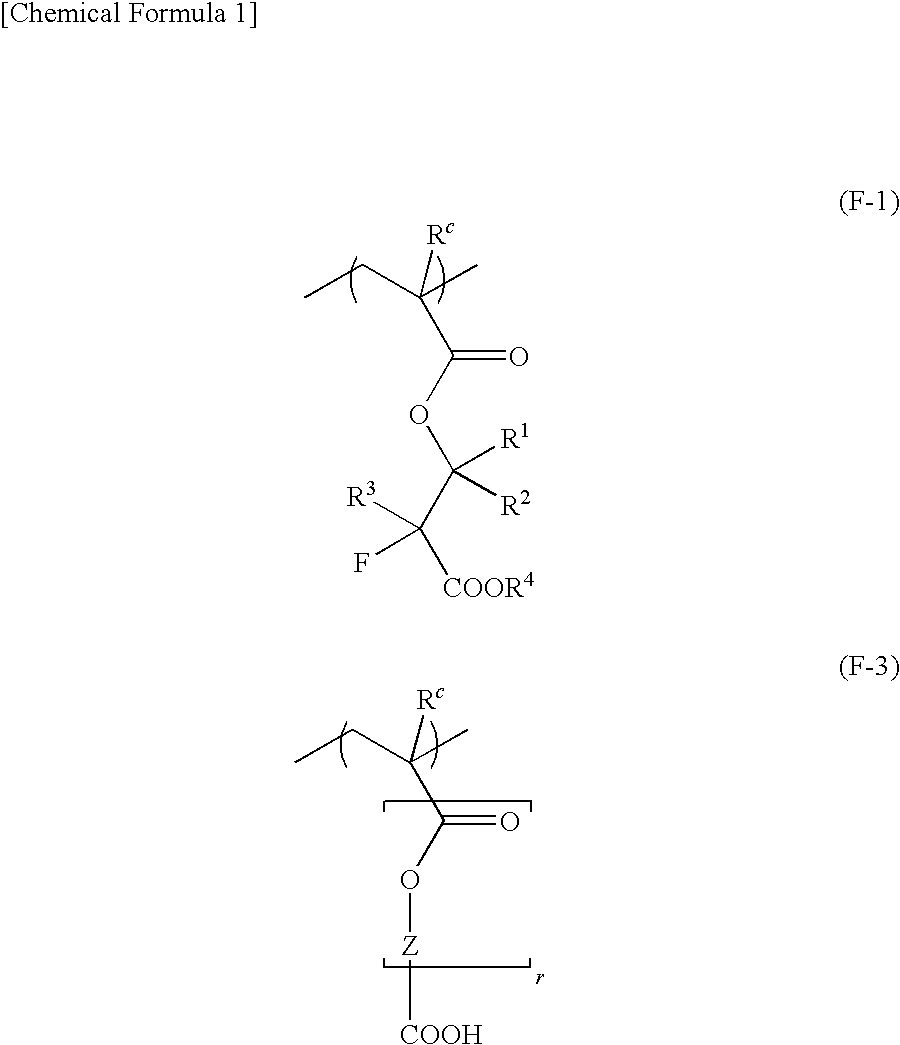Positive resist composition and method of forming resist pattern
- Summary
- Abstract
- Description
- Claims
- Application Information
AI Technical Summary
Benefits of technology
Problems solved by technology
Method used
Image
Examples
synthesis example 1
Monomer Synthesis Example 1
Synthesis of Compound (1)
[0694]300 ml of a THF solution containing 20 g (105.14 mmol) of an alcohol (1), 30.23 g (157.71 mmol) of ethyldiisopropylaminocarbodiimide (EDCI) hydrochloride and 0.6 g (5 mmol) of dimethylaminopyridine (DMAP) was added to a 500 ml three-necked flask in a nitrogen atmosphere, and 16.67 g (115.66 mmol) of a precursor (1) was added thereto while cooling with ice (0° C.), followed by stirring at room temperature for 12 hours.
[0695]After conducting thin-layer chromatography (TLC) to confirm that the raw materials had dissipated, 50 ml of water was added to stop the reaction. Then, the reaction solvent was concentrated under reduced pressure, and extraction was conducted with ethyl acetate three times. The obtained organic phase was washed with water, saturated sodium hydrogencarbonate and 1N—HClaq in this order. Thereafter, the solvent was distilled off under reduced pressure, and the resulting product was dried, thereby obtaining the...
polymer synthesis example 1
Synthesis of Polymeric Compound (1)
[0699]In a three-necked flask equipped with a thermometer and a reflux tube, 11.77 g (69.23 mmol) of a compound (2), 15.00 g (47.47 mmol) of a compound (1), 16.58 g (63.29 mmol) of a compound (4), 4.65 g (27.69 mmol) of a compound (5) and 3.27 g (13.85 mmol) of a compound (8) were dissolved in 76.91 g of methyl ethyl ketone (MEK) to obtain a solution. Then, 22.1 mmol of dimethyl 2,2′-azobis(isobutyrate) (V-601) was added and dissolved in the obtained solution. The resultant was dropwise added to 42.72 g of MEK heated to 78° C. in a nitrogen atmosphere over 3 hours. The resulting reaction solution was heated while stirring for 4 hours, and then cooled to room temperature. The obtained reaction polymer solution was dropwise added to an excess amount of n-heptane to thereby precipitate a polymer. Thereafter, the precipitated white powder was separated by filtration, followed by washing with a n-heptane / isopropylalcohol mixed solvent and drying, thereb...
polymer synthesis examples 2-4
Synthesis of Polymeric Compounds (2) to (4)
[0701]Other polymeric compounds (2) to (4) were synthesized in substantially the same manner as in Polymer Synthesis Example 1, except that monomers for deriving the structural units of the respective polymeric compounds were used in a predetermined molar ratio.
[0702]The structural formulas of the obtained polymeric compounds (2) to (4), the weight-average-molecular-weight (Mw) and the molecular weight dispersity (Mw / Mn) determined by the polystyrene equivalent value as measured by gel permeation chromatography (GPC) and the compositional ratios of the copolymers as measured by carbon 13 nuclear magnetic resonance spectroscopy (600 MHz, 13C-NMR) are shown below.
Synthesis of Acid-Generator Component (B)
[0703]The compounds used as the acid-generator component (B) in the present examples were synthesized in accordance with the following synthesis examples.
[0704]In the NMR analysis, the internal standard for 1H-NMR is tetramethylsilane (TMS), a...
PUM
 Login to View More
Login to View More Abstract
Description
Claims
Application Information
 Login to View More
Login to View More - R&D
- Intellectual Property
- Life Sciences
- Materials
- Tech Scout
- Unparalleled Data Quality
- Higher Quality Content
- 60% Fewer Hallucinations
Browse by: Latest US Patents, China's latest patents, Technical Efficacy Thesaurus, Application Domain, Technology Topic, Popular Technical Reports.
© 2025 PatSnap. All rights reserved.Legal|Privacy policy|Modern Slavery Act Transparency Statement|Sitemap|About US| Contact US: help@patsnap.com



